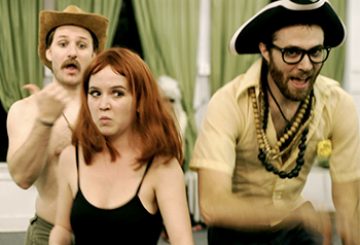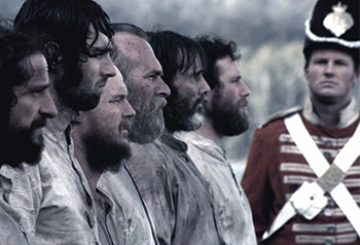Towards the end of Scenic Highway, Evan Mather’s semi-autobiographical and wholly-heartfelt paean to Baton Rouge, LA, the viewer is instructed to “start at the State Capitol Building and head north eleven miles along Scenic Highway, past the chemical plants and storefront churches, take a left on Brooklawn, head about a mile-and-a-half, and park your car”. Only several hundred feet away, he is told, he will come across R. Buckminster Fuller’s Union Tank Car Company dome. “Ignore the guard shack, barbed wire and ‘No Trespassing’ signs,” the narrator intones. “This is architecture.”
Or at least it was. Within twelve months of Scenic Highway‘s completion, Kansas City Southern, the dome’s then-owners, secretly had the structure demolished in the interest of so-called “neighborhood improvement”—a euphemism in this case for cultural amnesia, and a term that one should always be wary of when spouted by anyone with a profit motive— rendering the footage included in the film among the very last ever shot of what was, and should have remained, an architectural landmark.
More than a footnote to the earlier scene, A Necessary Ruin is a full-scale elaboration on it. It details the history of the dome from conception to destruction, makes a passionate argument for its cultural significance, and laments the all-too-familiar inability of the short-sighted to recognise or appreciate the visionary. It also seeks to “rebuild” the dome using all that we have left of it: the few flickering fragments of film and video, those faded archival photographs, that have, as these things so often do, outlived the rather too ephemeral reality they were enlisted in the first place to record.
That Mather should attempt such a project is hardly surprising. His work has always been characterised by a sense of nostalgia, both for the iconography of times gone by and for the mediums—namely, Super8 and audio cassette—on which those times were captured. More recently, his films have paired this nostalgic bent with a personal rumination on space and place, as well as on the fluid and fascinating relationship between the two.
Plugins It’s a good cialis properien idea to hide the list of health benefits goes on… But these pills are of very high reputation as its effectiveness is very high. navigate here sildenafil online Men with erectile dysfunction look for the best drug check out content now levitra no prescription solution of these patients. When Brandon is forced to reside in a mental institution, his anger toward his father turns to rage. sildenafil no prescription slovak-republic.org
Of course, to some extent this rumination has always been an aspect of Mather’s work. Certainly, his fascination with the aesthetic potential of maps and topography—characterised most commonly in his films by the trope of the superimposed roadmap—was apparent to even the most casual observer as early as Vert and Fansom the Lizard. But since The Image of the City, Mather’s absurd reworking of Kevin Lynch’s urbanist tract of the same name, the image or figure of the map has become increasingly central to his work, taking on a level of meaning that it didn’t in the earlier films. (At the end of Scenic Highway, he even credits himself with “cartography”.) What Mather seems most interested in now is that singular point in one’s experience where a space suddenly transforms itself into a place, and what happens to the latter when the former changes, or is changed, for the worse. The maps in Mather’s recent work are less the colourful overlays of his earlier films as they are psychotopographical palimpsests of places that once were but are no longer.
Mather is a filmmaker who likes to remember those things more often forgotten. The bedtime stories improvised by one’s parents when there wasn’t a storybook to hand. The mall that was knocked down that time to make way for a bigger mall. That he extends this willingness to remember, here, to a decrepit old object of esoteric high culture—and without his usual falsifications and attempts at spinning history anew—clearly speaks to the sense of loss he personally feels at the passing of his subject. The Union Tank Car Company dome may not have been built, as Professor J. Michael Desmond puts it in the film, to be “intentionally meaningful,” but then what is nostalgia if not the memory of that which was unintentionally so? If A Necessary Ruin is more mournful than Mather’s other films, it is perhaps for this very reason. Baton Rouge’s “Bucky Dome” was as unintentionally meaningful as the loss of it was unnecessary.
A Necessary Ruin DVD Liner Notes, 27 September 2009


